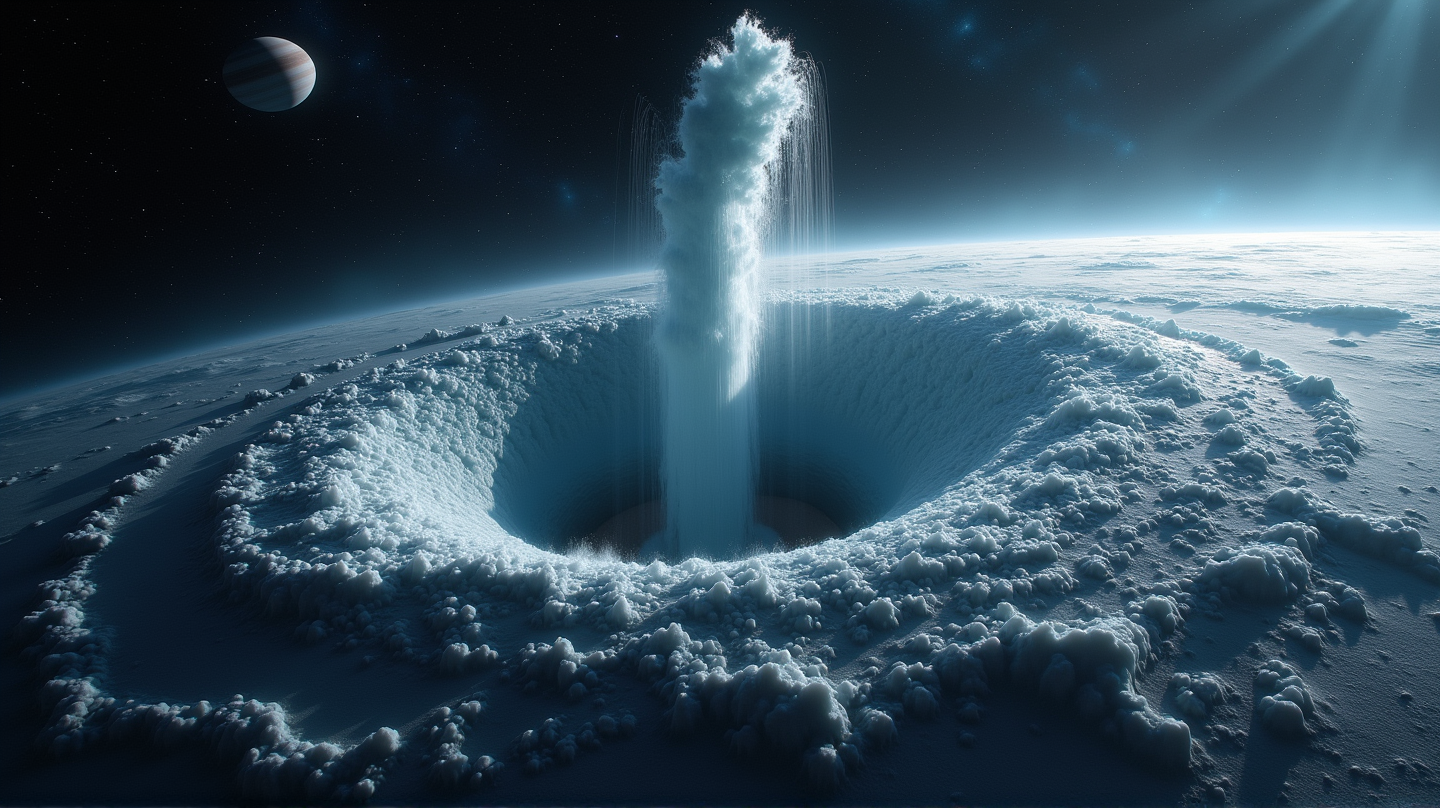Could the Icy Ocean of Saturn's Moon Enceladus Harbor Life?
Fresh insights from Cassini data unveil Enceladus' rich ocean chemistry, hinting at the moon's potential for life.

Saturn’s moon, Enceladus, constantly surprises scientists with its intriguing revelations. Recent analysis of NASA’s Cassini spacecraft data has unveiled a rich tapestry of complex chemistry occurring beneath this moon’s icy crust, stirring hopes about the potential cradle of life beyond Earth.
The Wonder of Enceladus’ Geysers
In 2008, the Cassini mission soared through Enceladus’ geysers—towering 6,000 miles above the surface—collecting precious samples. Known for harboring water, salts, and now a variety of carbon-based molecules, these geysers have become key to understanding the moon’s hidden ocean. According to Nozair Khawaja, lead author of a study published in Nature Astronomy, the data captured through Cassini’s Cosmic Dust Analyzer bring forth a compelling narrative.
Organic Chemistry Beneath the Ice
Researchers detect organic molecules linked to hot water-rock reactions around seafloor vents on Earth, believed to have sparked the origins of life. The fresh samples from Enceladus reveal a consistency between these organics and materials from Saturn’s E ring, intimately tied to the moon’s geysers—making a case for an internal origin rather than cosmic contamination.
A Deep Dive into Complex Chemistry
Upon simulating the impact of ice grains against Cassini’s instruments at various speeds, the research team validated their findings. Chemicals such as aldehydes, esters, and ethers—a part of life’s building blocks—indicate a more intricate chemical environment than previously imagined. Intriguingly, the detection of nitrogen-oxygen compounds hints at even deeper complexities.
Enceladus: A Celestial Laboratory
The presence of five out of the six essential elements for Earth life, such as carbon, hydrogen, nitrogen, oxygen, and phosphorus, on Enceladus stirs the scientific community, leaving sulfur the only missing piece. Current lab experiments with sulfur aim to complete the picture. As stated in Mashable, these findings bolster ESA’s enthusiasm for a follow-up mission that would delve further into this cosmic enigma.
What’s Next for Enceladus?
The new findings enrich the moon’s habitability allure and underscore the necessity for a return mission. By exploring and even landing on Enceladus, scientists hope to unveil more secrets, perhaps redefining humanity’s understanding of life’s place in the universe.

